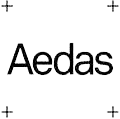A Global 3D Rendering Company
For Real Estate Developers and Architects
A global 3D rendering studio and architectural visualization company helping real estate developers and architects secure approvals, attract investors, and accelerate pre-sales.
+10 Years in Business
+ 150 Clients
+ 1,000 projects


















Your Trusted 3D Rendering Studio
That De-Risk and Accelerate Your Projects

Investor Buy-In
Cinematic renderings and animations that highlight your project’s true value.

Fewer Redesigns
Streamlined collaboration that prevents costly delays and miscommunication.

Stronger Pre-Sales
Visuals crafted to excite buyers before the first shovel hits the ground.
Faster Approvals
Accurate, compliant 3D visuals that give planning boards clarity and confidence.
Our Core 3D Rendering Services
We operate as a full-scope architectural visualization studio, delivering photorealistic visuals for every stage of your project. Whether you’re a real estate developer, architect, interior designer, or agency, our 3D rendering services are built to support you
What Our Clients Had To Say
EXCELLENTTrustindex verifies that the original source of the review is Google. Worked with notriangle on multiple projects, they've always been great and so organized.Posted onTrustindex verifies that the original source of the review is Google. The renderings provided by No Triangle Studio were amazing! Their communication throughout the entire process was great and they were able to apply any slight changes and feedback within 24 hours. I can't wait to use their service again as it is an extremely useful tool with my hospitality clients.Posted onTrustindex verifies that the original source of the review is Google. Working with the NoTriangle team has been a pleasure. They were very easy to work with and delivered a great final productPosted onTrustindex verifies that the original source of the review is Google. Great service. They go above and beyond and really work with you to ensure that you get exactly what you want. I've been very impressed with how professional they are no matter how small the request, and I couldn't recommend them more.Posted onTrustindex verifies that the original source of the review is Google. We've just finalized really beautiful renders for high end boutique condos coming out and had an amazing experience. The process from start to finish involved a high level of customer service and care. We can't wait to work together on our next project!Posted onTrustindex verifies that the original source of the review is Google. Great work!!!! A pleasure to work with.Posted onTrustindex verifies that the original source of the review is Google. Great product! The team worked very diligently to complete all of our requests in a short time frame, communication was seamless.Posted onTrustindex verifies that the original source of the review is Google. We brought them on board for visualizing a high-rise residential tower in Manhattan. Their renderings didn’t just look great—they helped us communicate the vision to stakeholders and speed up approvals. They understood the complexity of urban context and handled it with skill. We’ll definitely be collaborating againPosted onTrustindex verifies that the original source of the review is Google. Loved the final result. These guys are sharp, talented, and easy to work with. Every render had that polished, high-end look we needed for our pitch deck.Posted onTrustindex verifies that the original source of the review is Google. I can't say enough good things about this company. From the start, they were incredibly professional and easy to work with. What stood out the most was their communication—quick responses, clear updates, and a genuine willingness to listen to our needs. The final renderings were absolutely stunning, capturing every little detail we had in mind. It’s rare to find a team that combines technical skill with such a client-focused approach.
Strategy Driven Architectural Visualization & 3D Rendering
You don’t just need a pretty picture. You need visuals that win people over.
Most rendering companies stop at making things look good. That’s not enough. Your project deserves more.
At NoTriangle Studio, every image, animation, or VR tour is built around a clear strategy:
your goals, your audience, your market.
We act as a 3D visualization studio and partner, not just a production team. Before we render, we dig into:
- who needs to say “yes” (planners, investors, buyers)
- how your competitors present similar projects
- what story your visuals must tell to stand out
The result? 3D rendering services that don’t just look beautiful — they support approvals, unlock funding, and drive sales.
Our Portfolio
Have a Question or are you
Ready to Get Started?
Book a call with Eddie Kingsnorth, our Business Development Manager. He will talk through your ideas and show you how our 3D renders can bring your vision to life.

Why Partner with our 3D Visualization Studio?
Because “good enough” won’t get your project approved, funded, or sold!
Global expertise
Trusted by developers, architects, and agencies worldwide.
Architectural insight
Designs understood, details respected.
Built for speed
Visuals delivered fast, without compromising quality
Outcome focused
Packages tailored to approvals, investor buy-in, and pre-sales
Always available
A responsive rendering company that keeps you in the loop with clear timelines, defined feedback rounds, and dependable turnaround.
The Process
From Insight to Impact

Briefing
You share your project, goals, and success markers. We align with your team so the outcomes you need are crystal clear.

Market Analysis
We research your audience, positioning, and competitors to uncover what visuals will resonate — and how your project can stand out.

Strategy & Creative Planning
Together, we define the narrative, creative direction, and scope. This ensures everyone’s aligned before production begins.

Visual Content Production
From cinematic images to animations and interactive experiences, we craft visuals designed to serve your objectives, not just look beautiful.

Delivery & Review
Did the visuals help secure approvals, excite investors, or drive sales? If adjustments are needed, we refine or prepare for the next campaign.
We Work Globally With
Our clients span the real estate and design world — but they all share one thing in common: projects where success depends on strong visuals.
- Real estate developers – de-risk projects, win faster approvals, and sell more units off-plan.
- Architects – showcase design intent with visuals that capture both accuracy and emotion.
- Interior Designers – impress clients and planning boards with photoreal imagery that closes deals.
- Marketing Agencies – partner with a reliable 3D team that delivers cinematic content, on time and on brand.
- Product Teams - and brands turning concepts into compelling marketing visuals
Focus Project Locations
Who Are NoTriangle Studio?

Andrew Mathews
Founder & President

Lukas Berezowiec
Chief Executive Officer

Eddie Kingsnorth
Chief Business Officer

Shane O'Leary
Chief Project Officer

Rodolpho Reis
Chief Creative Officer
Frequently Asked Questions
A 3D rendering company turns ideas, drawings, and models into photorealistic visuals that show a project before it’s built. From striking still images to animations, 360 tours, and interactive experiences, our 3d services help architects, developers, and brands communicate their vision with clarity and impact.
3D rendering studio transforms concepts into photorealistic images and animations, allowing clients to see and feel their designs before they exist in the real world. At NoTriangle Studio, we bring architecture, interiors, and products to life with striking realism and attention to detail—helping developers, designers, and brands communicate their vision, inspire stakeholders, and make confident decisions. Our work doesn’t just show what a project will look like—it tells its story and creates excitement long before it’s built.
Unlike many rendering companies that simply “make things look nice”, we create strategy-driven visuals built to sell more, win approvals, and attract investors. Before we design a single image, we analyse your target audience, study competitor visuals, and define how your project should be positioned.
Clients often highlight:
- high professionalism and clear communication
- fast turnaround for urgent projects
- deep experience across residential, commercial, and mixed-use developments
This combination makes us a trusted 3D rendering firm for repeat projects.
Highly realistic. We use advanced lighting, textures, and modeling techniques to reflect every detail of your design. The goal is to create visuals that feel like finished photography, while remaining faithful to your architectural intent.
Yes — when used strategically, 3D architectural rendering services can help properties sell faster, attract more qualified buyers, and support higher asking prices. By allowing potential clients to clearly visualize the finished project, they reduce uncertainty and speed up decision-making. While results vary by market and project type, many clients find that the investment in quality renderings pays for itself through quicker sales, stronger offers, and a smoother marketing process. You can explore the potential impact using our interactive rendering calculator and learn more in our blog on 3D rendering costs.
- Explain your goals and market context — share what you want to achieve and how your competitors present themselves so we can position your visuals to stand out.
- Give timely, batched feedback — consolidate comments into clear rounds to keep the project moving smoothly and avoid confusion.
- Provide complete project files — detailed drawings, references, and specifications ensure accuracy and save time in revisions.
- Be open to strategic input — our role isn’t just to execute, but to advise on how to make your visuals more persuasive and effective.
Standard turnaround for still images is around 10 working days, depending on complexity and volume. For animations, VR, or large multi-building projects, we’ll provide a custom timeline. We also offer fast-track options for urgent launches.
We work fully online as a distributed 3D rendering studio, with a satellite team in San Francisco. Most of our clients are in the US, but we regularly collaborate with teams across Europe and other regions.
The best starting point is detailed architectural plans or 3D models (CAD, BIM, or similar). However, sketches, drawings, and reference imagery can also work. We’ll guide you through exactly what we need and structure the process so your team spends minimal time managing the 3D rendering side.
Contact Us To Discuss Your Project Today
Top Blogs and Resources

The Cost of Renderings – A Complete Guide to 3D Rendering Pricing (2026)
Determining the 3D rendering cost is a common concern for

Architectural Rendering 101: Everything You Need to Know in 2025 & Beyond
Architectural rendering is the process of creating lifelike digital images

What Is 3D Exterior Rendering (and How the Process Works)
3D exterior rendering is the process of creating realistic digital

How To Outsource Rendering Services
3D Rendering has become an indispensable tool for real estate


